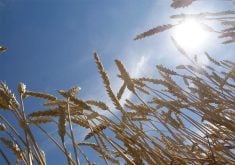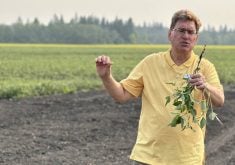Tales of a storm chaser | Greg Johnson shares experiences as he travels through Tornado Alley
There are times when Greg Johnson sleeps while it’s sunny.
And when it’s storming, the Regina-based storm chaser is on the road, travelling countless hours and thousands of kilometres to document tornadoes and extreme weather events across the United States.
Johnson has followed some fantastic and terrifying weather events, even witnessing firsthand the aftermath of last year’s tornado in Joplin, Missouri. These events, he cautions, aren’t isolated to the central United States.
Beginning in the spring, storms begin to fire up over Texas and Louisiana, moving north as warm and moist Gulf of Mexico air clashes with Arctic air. Tornado Alley, as it’s called, actually ends on the Prairies, Johnson said, showing itself in a three- or four-week window of storm opportunities in July.
Read Also

Agritechnica Day 2: The future of tractor power, building quicker crop apps and large farms and tech
Agritechnica Day 2: The future of tractor power, building quicker crop apps with Syngenta and large farms and tech
Think of the 1912 Regina Cyclone or the more recent 2000 storm in Pine Lake, Alta., and the storms in Kawacatoose First Nation and Raymore, Sask., in 2010.
Those are the extreme examples. Many tornadoes on the Prairies go unnoticed or unreported and, with a small population spread out over a large space, do little damage.
“But that makes (them) no less strong or dangerous than anything you get down south,” said Johnson.
For half a decade, Johnson pursued storms as a hobby, using vacation time to document tornadoes and build a knowledge base and skill-set for the craft.
Then, in 2011, the father of three sold his photography studio and entered the storm chasing business full-time.
He decked out a Nissan Essex with an onboard doppler radar, his camera gear and a few team members for assistance and went to work.
His travels through the memorable 2011 storm season are documented in Blown Away: A Year Through the Lens of the Tornado Hunter.
The book is filled with captivating photos from the 60,000 kilometres he spent on the road and familiar scenes from Saskatchewan and Manitoba.
One of his favourite photos of the year, from Pense, Sask., shows a massive lightning bolt stretching from the sky to the ground, illuminating a Viterra elevator.
“Whenever somebody comes up, they want to talk about their own personal experience,” he said during a recent book signing in Saskatoon.
Johnson sells storm photos and videos, teaches photography workshops and shares his experiences as a keynote speaker.
“They start describing what the clouds looked like, and start describing what happened and how they survived,” he added. “Everyone seems to have some sort of relational story with weather.”
He will soon be hitting the road again and is making plans by upgrading to a Ford F-150 truck and paying close attention to the weather.
He said unusually high temperatures might carry over into an “extremely warm summer,” which if true could bring an earlier and prolonged start to the storm season north of the border.
“All indicators are at this point that we should see a very, very severe weather season.”















